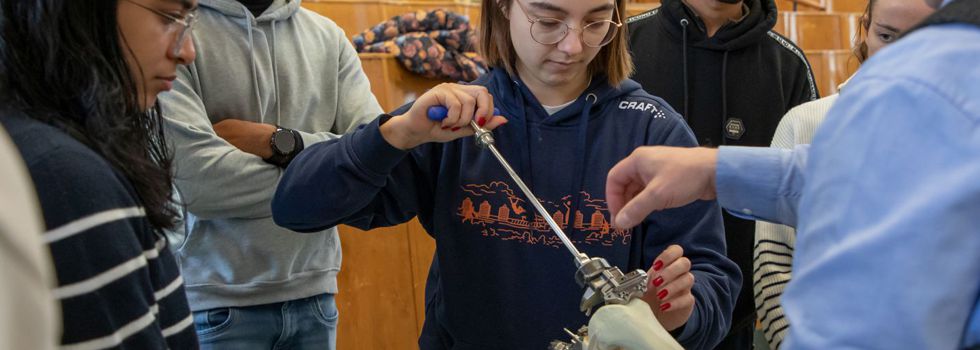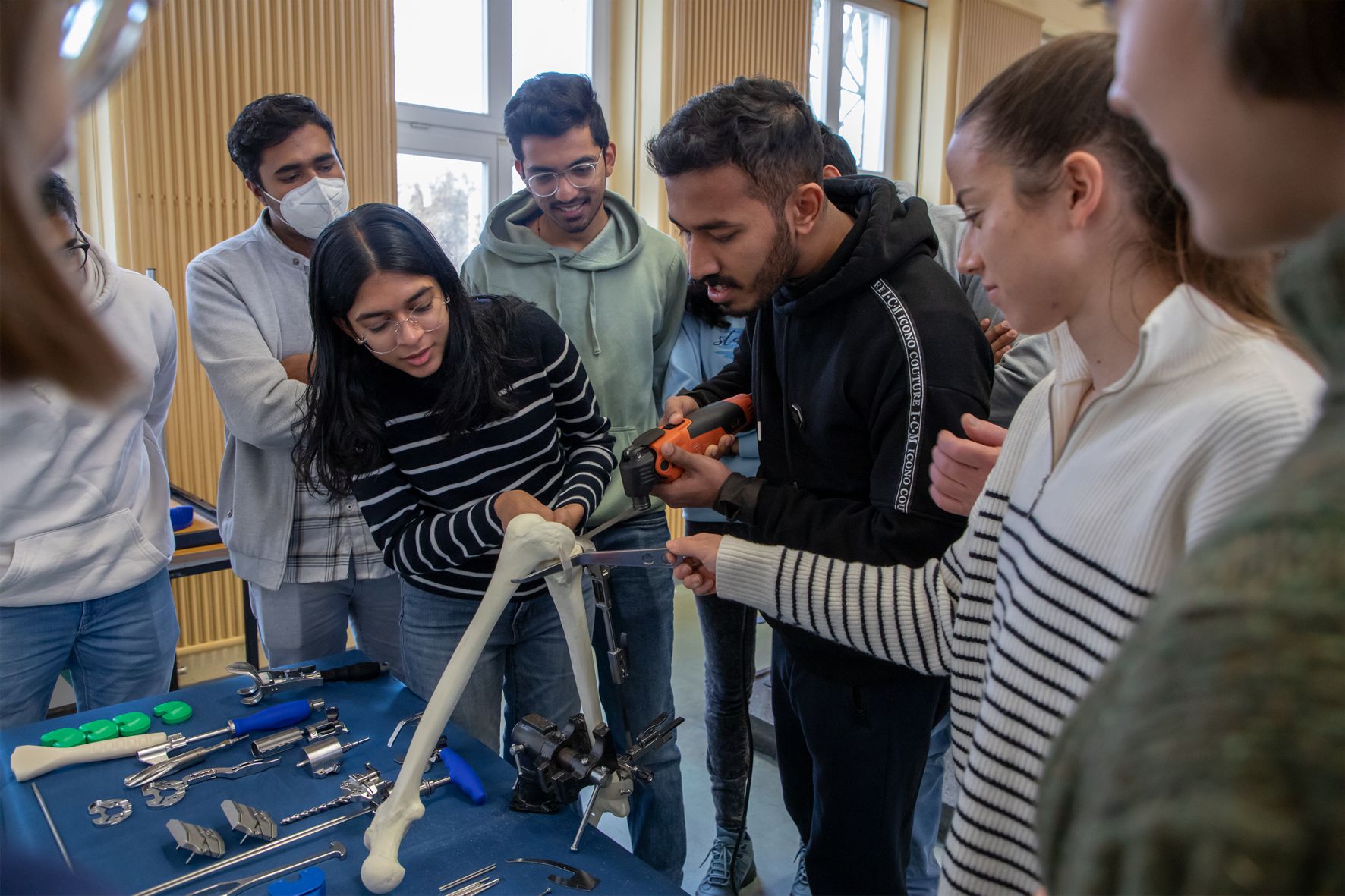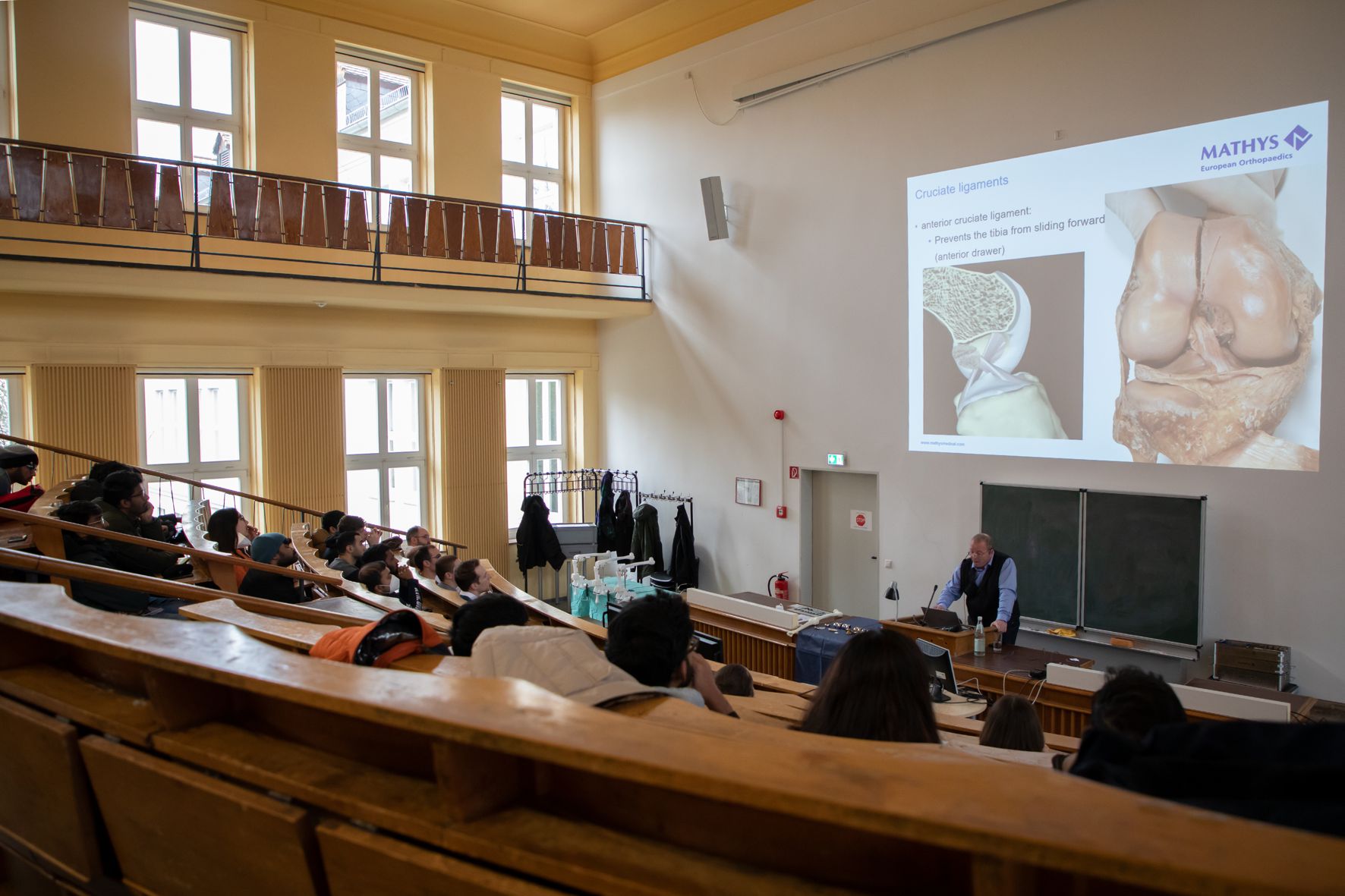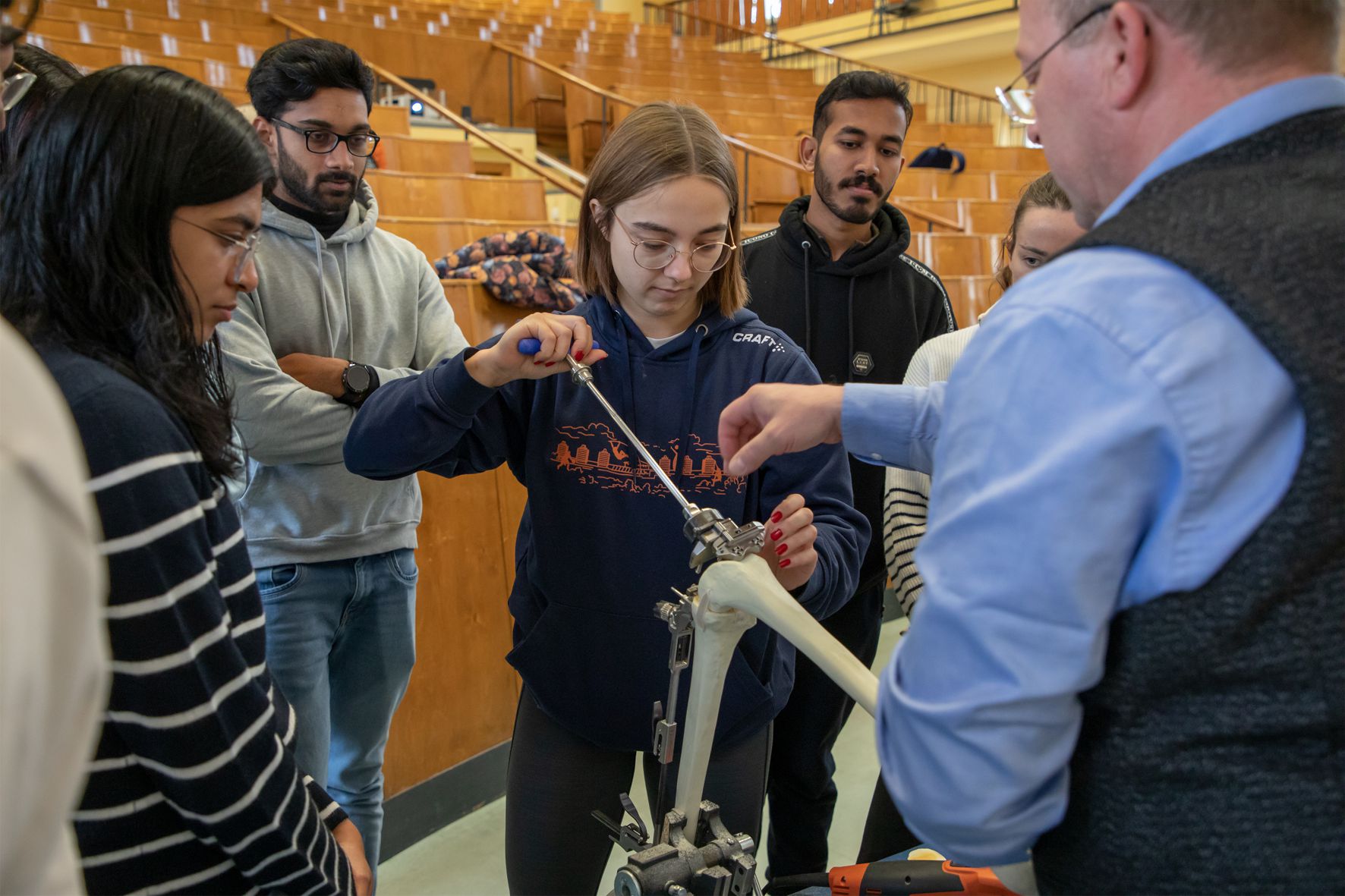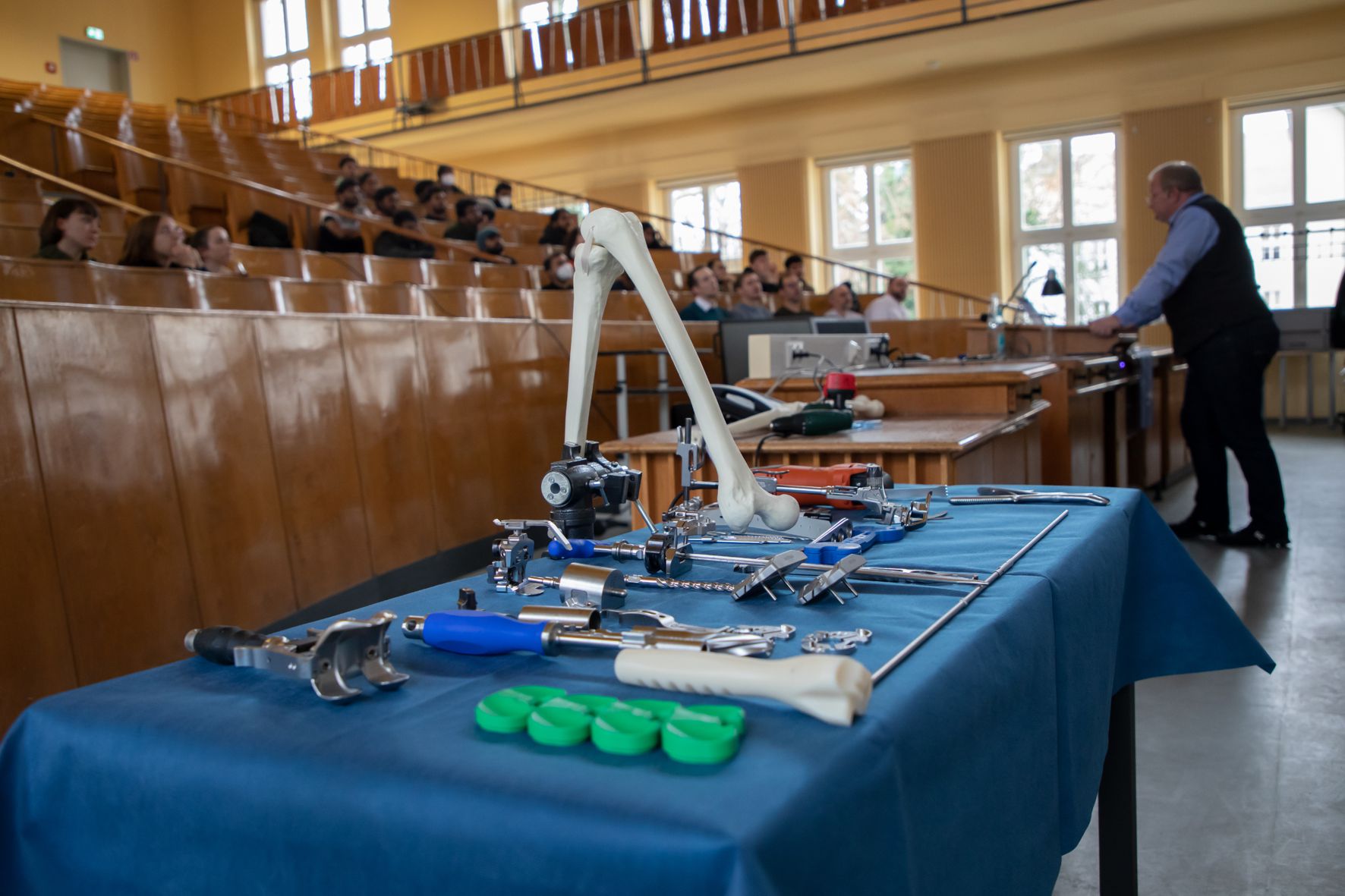Hands-on experiences using surgical orthopedic instruments
Students of the interdisciplinary master’s program Biomechanical Engineering, which started in the winter semester 2022/23, had the unique opportunity to participate in a practical medical training for the implantation of a knee endoprosthesis led by Mr. Sascha Ruhland from Mathys AG. Under expert guidance by the orthopedic surgeons Dr. med. Marcus Klutzny and Martin Lohrengel, students put their own hands on surgical tools to prepare artificial knee joints. This interdisciplinary workshop was part of the course “Orthopedic Technology” conducted by the clinic director Prof. Dr. med. Christoph H. Lohmann of the Orthopedic University Clinic Magdeburg.
Fotos: Melitta Schubert (FME, Pressestelle)
Repair the knee with saw and drill
The following field report was written by Rebecca Höpfer as a participating student.
As master's students in the Biomechanical Engineering program, our studies teach us not only the basics of human anatomy, physiology and movement, but also the theoretical principles of mechanics and engineering. During a medical training course, we were given the opportunity to gain a deeper and more practical insight into the fascinating field of joint endoprosthetics.
A total knee arthroplasty must be performed when there is severe, usually degenerative damage in the knee joint. The patient is implanted with an artificial knee replacement to relieve of pain, restore joint function and regain quality of life. Even though the products on the market show a significant success rate, complications do occur. That is why the further development of joint replacing implants is a core research area of biomechanical engineering.
The medical training workshop demonstrated us the crucial interface between physicians and engineers. After we received a short theoretical introduction to the implantation technique, the practical hands-on part began.
If there had not been a plastic model of a femur and a tibia bone bolted to the table, the set up could have easily been out of one’s home workshop: among some non-familiar looking objects laid a hammer, a plier and an electrical screwdriver and saw. These exact tools are used in the real procedure on a human knee joint that we were about to simulate. With that in mind, we started the following steps rather cautiously.
To restore the anatomical alignment between hip, knee and ankle, the correct intraoperative fixation of femur and tibia is very important. Therefore, we first had to screw a frame onto the bones and repeatedly check the alignment with a simple metal rod. Once the sawing templates were correctly positioned, we used the electrical saw to cut off the hypothetically damaged articulating surfaces of the knee. In this process, protection of the collateral ligaments was crucial to maintain the stability of the joint.
| Rebecca Höpfer mounts the sawing template on the artificial femur bone |
Use of a surgical hand saw to remove the joint surfacee |
In addition, holes had to be drilled in the prepared surfaces to anchor the components of the endoprostheses in the bone. The resulting bone models looked a bit angular, but matched perfectly the shape of the inside of the implants. The final implanted endoprosthetic surfaces resemble the natural shape of the knee joint and allow homogeneous rolling and sliding movements of the artificial joint. Since each patient has different anatomical and physical conditions, we were shown different implants and component sizes from which surgeons can choose. In this way, the best possible result can be achieved for each patient.
Engineers and surgeons must work hand in hand in the development of joint replacement implants. This seminar provided us, as future biomechanical engineers, with a first-class exchange of practical medical knowledge that will greatly help us in the development of future implant technologies.






